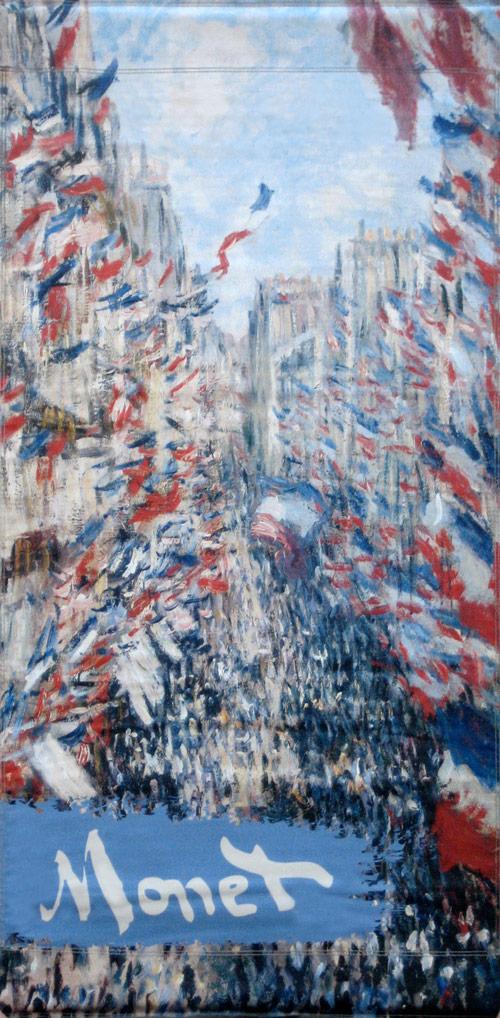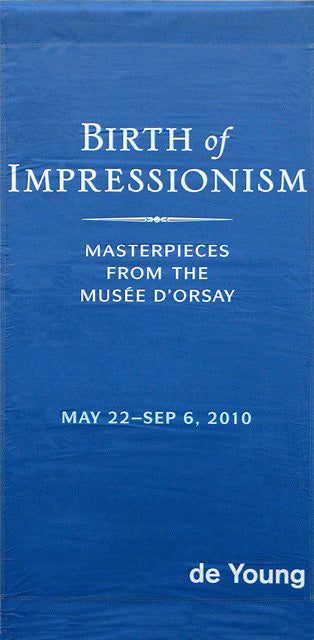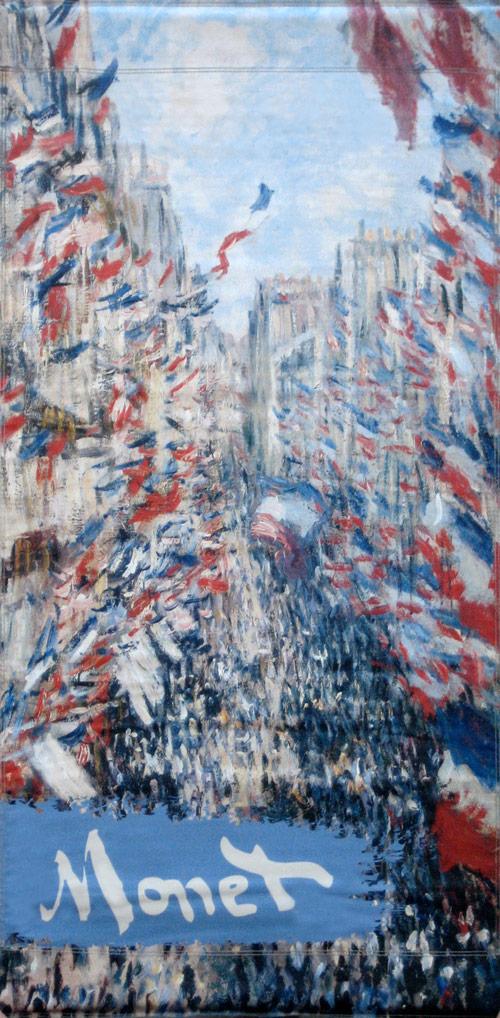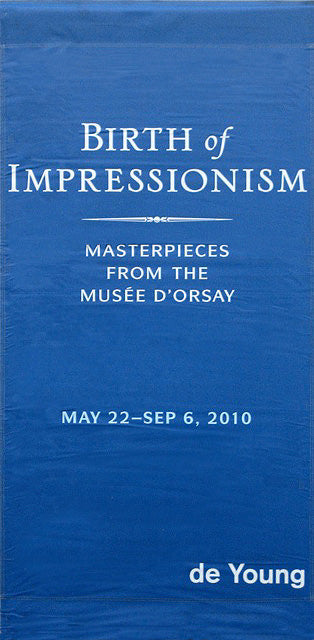de Young Museum
Monet "Rue Montorgueil"
Monet "Rue Montorgueil"
Couldn't load pickup availability
Share
Limited Edition: 10
Exhibition: Birth of Impressionism: Masterpieces from the Musée d’Orsay
Material: Printed 2-ply vinyl
Dimensions: 35" x 72" (88cm x 182cm)
Hanging Hardware Included
Summary
While a portion of the Musée d’Orsay was closed for renovations in preparation for their 25th anniversary (2011), some of their most prized paintings travelled to San Francisco in 2010 for the U.S. debut of the Birth of Impressionism: Masterpieces from the Musée d’Orsay. The Impressionist movement took its name from a painting by Claude Monet entitled Impression, Sunrise (1872). Instead of copying the old masters like his contemporaries, Monet painted what he saw through a window or en plein air, capturing the effects of transient light with rapid brush strokes and bright colors. In Rue Montorgueil, Paris. Festival of June 30, 1878, thick short brush strokes suggest waving flags in the outdoor breeze.
Description
This exhibition represented a unique opportunity for museum visitors to see some of the most important works of Impressionism normally only available in Paris. Close to 100 paintings borrowed from the Musée d’Orsay’s permanent collection comprised the exhibition, Birth of Impressionism: Masterpieces from the Musée d’Orsay Many avant-garde Impressionists of the mid- to late 19th century were featured, including the works of William-Adolphe Bouguereau, Gustave Courbet, Edgar Degas, Édouard Manet, Claude Monet, Pierre-Auguste Renoir, Alfred Sisley, and James Abbott McNeill Whistler.
Impressionism was born in France during the turbulent time of the Franco-Prussian War (1870) marking the end of the French Second Empire and Napoleon III. Artistically and socially, times were complicated too. Artistic rivalries developed between those selected to exhibit at the state-run Salon de Paris, which followed the prescribed standards of the Académie des Beaux-Arts, and those core Impressionists who often weren’t accepted by the Salon’s jury. Impressionism extended through the Belle Époque, a period of political stability between the end of the Franco-Prussian war and the beginning of World War I. The ‘beautiful era’ was characterized by optimism and advancements in technology and medicine.
The de Young Museum promoted the exhibition with three street banners featuring paintings by Claude Monet, Édouard Manet, and Edgar Degas. Monet’s Rue Montorgueil, Paris. Festival of June 30, 1878 (1878) appears on the front side of this banner. To celebrate the opening of the third Paris World’s Fair, Exposition Universelle, Monet captured a festive street scene with French tricolour (royal blue, white, and red) flags flying above the crowd. Up close, the broken brush strokes of the flags look blurry but from a distance they come into focus and give the illusion of movement. Paris’s World’s Fair was especially important as it marked the end of the Franco-Prussian War and the recovery of France.
The back side of the banner uses the same royal blue with the exhibition name in white and light blue lettering, and the dates in yellow. Bank of America and de Young logos appear in white at the bottom. Companion banners sold separately feature Degas' The Dancing Lesson and Manet’s The Fifer.
Provenance
This banner was displayed around the San Francisco area between May 22 and September 6, 2010 to promote Birth of Impressionism: Masterpieces from the Musée d’Orsay. The exhibition had its U.S. debut at the de Young Museum, and was followed by Van Gogh, Gauguin, Cezanne, and Beyond: Post–Impressionist Masterpieces from the Musée d’Orsay in the Fall of 2010. The de Young Museum was the only museum in the world to host both exhibitions.
About the Artist










